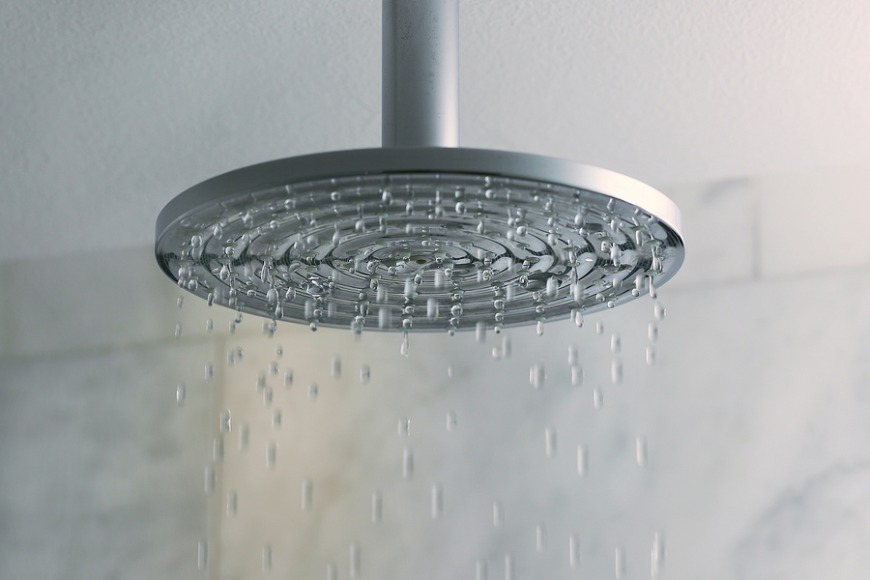Time to carry out some air quality control checks? Breathe more easily at home with these tips

All credits: PA
Outdoor air pollution in Dubai is an ongoing concern for residents, but what about the quality of the environment inside our homes?
Our safe havens can harbour potentially harmful toxins and poor air quality too – and while there’s no need to panic, it’s a good idea to be aware of how these things can impact our health, and steps we can take to prevent this.
Here are some of the key points to factor in when it comes to indoor air pollution in your home…
What is ‘Toxic Home Syndrome’?
The idea that our homes can make us ill is far from claptrap (ask anybody with a lung condition, like asthma for instance, and things like indoor air quality can be extremely important) and there’s even a term for it: Toxic Home Syndrome.
“Toxic Home Syndrome occurs when individuals and families are exposed to a potent mix of airborne pollutants within the home, arising from poor ventilation, causing respiratory and skin diseases to occur more frequently,” explains Southampton University professor of allergy and respiratory medicine Peter Howarth.
Things like mould, damp and condensation play a big part in Toxic Home Syndrome. Symptoms can include fatigue, dizziness, headaches and respiratory problems, while young children and the elderly, or people with pre-existing health problems, are often most at risk. In more serious cases, indoor air pollution could even contribute to major illnesses including cardiovascular disease and lung cancer.
How can you avoid a ‘Toxic Home’ making you ill?
There’s lots more information on the My Health My Home campaign website. Meanwhile, here are Professor Howarth’s five top tips for avoiding Toxic Home Syndrome…
1. Clean your air:
Make sure you have adequate ventilation in your home to take out the pollutants and moisture that can build up. All sorts of household products including candles and cleaners contain potentially dangerous pollutants, and if these aren’t removed through ventilation, they simply build up in your home.
2. Wooden flooring:
Carpets harbour dirt, dust mites, pet hair, fungus and other potentially harmful particles that can aggravate the lungs. Swapping carpet for wooden flooring makes it easier to keep clean.
3. Go green when you clean:
Use eco cleaning products which have fewer toxins and pollutants in them. Non-eco household cleaners can release formaldehyde when they come in to contact with the air, a substance linked to cancer.
4. Curtain call:
Change your shower curtain regularly to reduce mold growth which releases spores and toxins into the air. These can cause or exacerbate respiratory and skin conditions such as asthma and eczema.
5. Cut the moisture:
Shut the bathroom door when showering, wipe down wet surfaces, put on your extractor fan and cover your pans when cooking. Excessive moisture allows dust mites and mould to thrive, can aid bacterial growth and affect the survival of viruses.

Watch what you burn indoors
What you burn indoors could contribute to toxic air. Consider your candle choices. “Candles are wonderful when you’re trying to unwind. However, though they look harmless, many scented candles use paraffin wax, which gives off the toxic carcinogens benzene and toluene when burned,” says Branch.
“Opt for candles using only natural waxes like soy, rapeseed, plant and beeswax, to make your relaxation all the more satisfying.”
Harness some plant power
As well as looking good and nurturing a sense of calm, certain house plants could even help clean up the air in your home. Plants with especially good air-purifying qualities can help ‘reduce air pollutants by up to 80%’.
“The trend for bringing the outside in is still really popular, as more and more people realise the health benefits of adding a touch of greenery. Introducing plants into your home not only creates a fresh look, but it’s also a cost-effective way to naturally boost oxygen levels, improve humidity in your home and enhance your overall wellbeing,” says Homebase greenlife buyer, Gillian Bush.

Here are three plant suggestions to welcome into your home:
1. Boston Ferns (Nephrolepis):
One of the best plants when it comes to removing formaldehyde from the air. It’s non-toxic so is a great addition to any house, and the feathery ferns look beautiful spilling out of hanging or elevated pots.
- Where to put it: Anywhere
- How to look after it: Keep your fern in a cool environment and give it lots of attention. They thrive in bright spots but keep the soil moist and directly out of the sun.
2. Aloe Vera:
Already well known for its health benefits, but one of Aloe Vera’s lesser known benefits is how well it can remove benzene and formaldehyde from the air.
- Where to put it: Great for the bedroom as it produces oxygen at night time while processing the carbon dioxide in the air, giving you purer air and a chance at a better night’s sleep.
- How to look after it: Water deeply every two to three weeks and let the soil dry out a couple of inches on top before watering again.
3. Spider Plants (Chlorophytum):
Popular houseplants and great for eliminating significant amounts of formaldehyde, xylene, toluene and ammonia from the air.
- Where to put it: Kitchens and bathrooms
- How to look after it: These are super-easy to grow and will flourish in bright, indirect sunlight. They don’t need lots of attention so are perfect for those who are a bit forgetful or are just starting out.
- Tags:
- Home services
- home




.png?itok=HBSyMDok)









































































.png)


























.png?itok=0fOAXkOm)

























.png?itok=EH_x0Pha)
